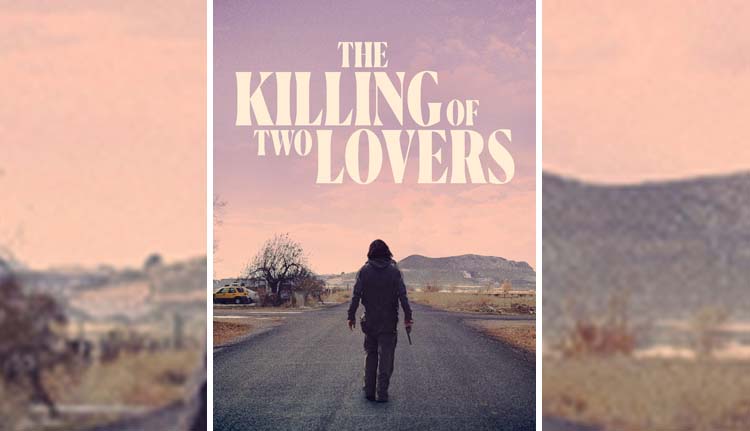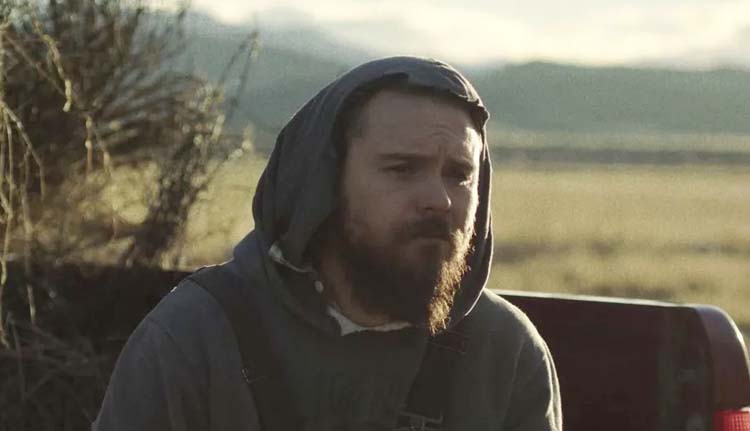The Killing of Two Lovers is a film by writer/director Robert Machoian (God Bless the Child), which unveils the story of David played by Clayne Crawford (Lethal Weapon series), his estranged wife Nikki (Sepideh Moafi), and a darkness that consumes one while nearly destroying the other. Sound designer Peter Albrechtsen and mixer David Barber created a rhythm of sounds that pulls viewers deeper into this story.
David and Nikki are high school sweethearts who married soon after graduation and started a family. Now with four children, David’s music career never took off, and tensions between the couple have led them to a trial separation. Nikki continues to live in the house with the kids while David moves in with his father. David’s in a place he doesn’t understand, and as the confusion and pressure increase, he succumbs to dark intents. The Killing of Two Lovers presents a dark journey into a man torn apart by circumstances he doesn’t understand.
PopAxiom spoke with Peter and David about creating the soundscapes that would express the feelings within David and Nikki.

How did your journey into sound begin?
PETER: I grew up in a household where my dad constantly listened to music. A lot of experimental stuff, classical music, and a lot of Beatles. When I learned to switch on the TV, I started watching many movies. One of the first films that made me think of sound and music in the film was Hitchcock’s Psycho. He was one of my favorite directors who loved to work with sound.
In 1995, I went to the European Film College, a sort of pre-film school based in Denmark. That’s where I realized that I could take everything that I love from music and movies and make sound for movies. Since then, I haven’t stopped. I found out it’s a giant playground for movie magic and storytelling. It’s been 20 years, and it still feels like I’m on the same playground or like a kid at the candy store. But it’s incredibly creative and playful.
DAVID: As a seven-year-old kid, the first time that ship in Star Wars came over my head, that was it. Cinema was a miraculous thing that I wanted to enjoy. At the time, I wanted to be a model-maker.
I was supposed to attend a model-making summer camp, but Prop 13 passed in California, and the funding went away. So, I never go to do that, and the desire to do it fizzled.
But I was always musical. I started with child piano lessons; then, I played saxophone all through high school that migrated into playing bass when we lost our bass player in a jazz band. Music became the thing through college and continued as the nighttime, weekend thing, but then Monday it was back to the day job.
I was in this quandary, and then Lord of the Rings came out. I can even pinpoint the sound when they cut off the hand of Sauron in the opening scene of Fellowship, and the blast goes out over the valley. The sound that went with it took my breath away. Then, the DVDs came out, and they had these brilliant behind-the-sounds things. I became fascinated with what they recorded, how they created the sounds, and how it all came together.
In my music days in LA, I’d worked at Saban Entertainment and met some great people. One of them said I should see a friend who works in audio post. So I took out a sizable loan to buy a Pro Tools system and gave myself a year to see if I could make it work.
How did the two become part of The Killing of Two Lovers team?
PETER: I’d met Robert Machoian on his previous film When She Runs. He told me he couldn’t do this movie without me, which was a lot of pressure, but it shows how much Robert thinks about sound.
I’m in Copenhagen, but I’ve worked on many American indies. I was looking for a sound mixer in LA; that’s where actor and producer Clayne Crawford was based. Someone recommended David and reached out to him. We hit it off.
DAVID: Ryan Coda was the conduit that connected us. Peter and I met a few times at awards shows. But if you’ve ever been to those, it’s like 900 people in a lobby say ‘Hey! Hi! I’m so and so.’

How does Robert approach sound?
PETER: It’s an integral part of how he loves to tell stories. He wanted sound, more than music, to drive the story. The Killing of Two Lovers is essentially a family drama, and you don’t see a lot of those without violin and some music. But Robert didn’t want that. He wanted the sound to tell the inner story of the characters. That was incredible.
Robert’s creative process doesn’t use temp stuff. Instead, he involves the sound early while he’s cutting the film. So he sent me a rough cut of The Killing of Two Lovers and let me try out things and experiment.
There’s a character running down the street in the film, and there’s this symphony of car sounds. Robert wanted the sound to be rhythmical and musical. So, I thought, ‘well, half the movie, the character’s in a car, so let’s use the car as his inner voice.’ So I built a sound collage and sent it over to Robert. It’s a crazy experiment, and I thought, ‘I’m going to get fired.’ I didn’t hear from him the next day or the day after. Five days went by, and I was getting more and more nervous until he wrote me this email saying, ‘Peter, this is amazing! I made a new cut of the film.’ So, what he did was take the sound I created for the opening and shape the film around these sounds, and it sort of became the vocabulary of the film.
It was a bold way to use sound design as something that’s integrated early on with the picture. Robert’s leaving a lot of room for interpretation and creativity. He’s so dedicated and inspiring in the way he directs us. He talks about the emotions of every scene. It’s an inspiring way to interpret those emotions and create a sonic universe that fits with that. It’s a different way of approaching the creative process.
What was the process like of working together?
DAVID: Our collaboration was almost like jazz. It was this feeling that you get together with a band and play music together, not only by how you play on your instruments but how you think about things and creatively do things. You do crazy, creative experiments that work because the band is there.
PETER: David, Robert, Clay, and I were working together to make the sound for this movie about a broken family, and we became a sort of family in the process.
DAVID: We had a great back and forth of complementary ideas — escalating complimentary ideas. That continued through the final day of the mix. It wasn’t that all of the elements came to the mix stage in their space and just needed balancing levels. We were in there thinking, ‘What if we put this here? Oh, if that’s there, then we can put this here.’ I liken it to classical terms where the scenes were movements of a symphony. We did a pass-through quickly to get the pieces in play, but we continued to explore the dynamics.
What’s a dream project for Peter and David?
PETER: What you realize when you’ve done a lot of movies, it’s more about the filmmaker and their vision. How much interest does the filmmaker have in sound? That’s what sets the bar of how creative you can be when you do the sound design. I think a filmmaker like Robert who invites the team into the process is special. The more that the director is open to that collaborative spirit, the more it can move mountains. It can make the sound design process exciting.
DAVID: I echo Peter’s sentiment. The trifecta for me is working on a great project with great people that had ample compensation. So I will take two of the three, and the two will always be great people on a great project.
The Killing of Two Lovers is available on Amazon Prime and Hulu.
Thanks to Peter Albrechtsen, David Barber, and Impact24 PR
for making this interview possible.
Read more interviews from Ruben R. Diaz today!


